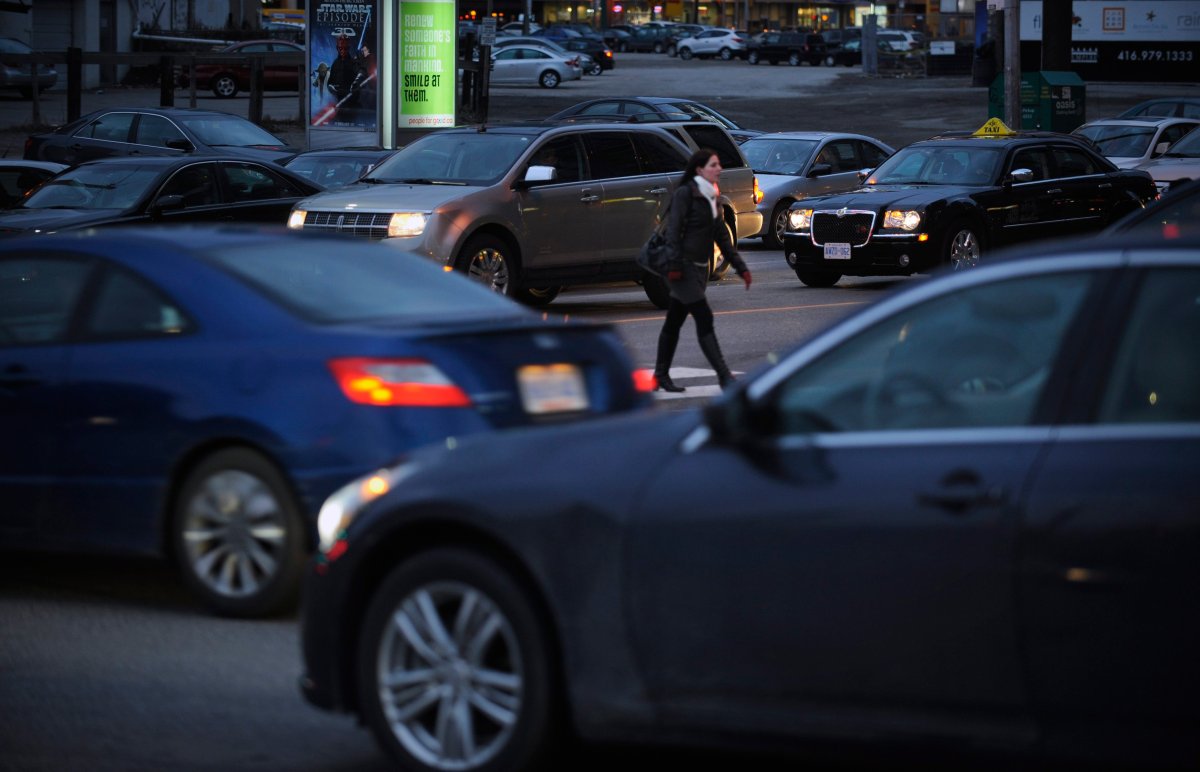A Global News exposé of Toronto’s most treacherous intersections for pedestrians prompted the city to do an in-depth review of its own, and come up with an action plan to make city streets safer for pedestrians.

The report, adopted at the city’s Public Works and Infrastructure Committee Wednesday, “provides a review of the methodology used by Global News to identify its ‘100 most dangerous intersections for pedestrians’ and develops a more detailed approach to the identification of those intersections most prone to pedestrian collisions in Toronto.”
It also sets out an “action plan” to address 10 priority crossroads, with both things the city can do right away and suggestions for farther down the road.
In June, 2011, the Global News Investigative Data Desk published an interactive map breaking down the city’s deadliest intersections for pedestrians – combining collision rates with total pedestrian counts to see which were most dangerous given the number of people using them every day.
The map found the worst intersections were predominantly those in suburban areas that had both high-density residential areas nearby and high vehicle traffic on multi-lane roadways.
The report created vocal reaction both online and in city hall, and spurred some councillors to call for more review of the issue.
“The Global News Network report,” Toronto’s public works and infrastructure report reads, “helped raise awareness of pedestrian safety and the need for motorists, cyclists and pedestrians to respect each other.”
- Mother’s Day Miracle: Rare medical intervention saves high-risk pregnancy for Ontario woman
- Mayor says Ottawa will reverse course on Israel national day event after cancellation
- TSX edges off recent record after blowout jobs report, U.S. stock markets mixed
- Teenage boy arrested after stabbing on Pickering, Ont. bus
The city report also found shortcomings with the data desk’s methodology, however – namely, that it didn’t take into account vehicle volume or changes over short periods of time, and it didnt look at mid-block collisions or intersections with small numbers of pedestrian traffic.
So the city came up with its own methodology, focusing on 10 highest-priority “signalized intersections.”
These are:
- Sheppard Ave. E and Ambrose Rd
- St. Dennis Dr. and Deauville Ln
- Steeles Ave. E and Ashcott St.
- Neilson Rd. and McLevin Ave
- St. Clair Ave E. and Brimley Rd
- Roncesvalles Ave and Fermanagh Ave
- Steeles Ave. E. and Strawberry Hills Dr.
- Rexdale Blvd and Queens Plate Dr
- Wilson Ave and Allingham Gdns
- Keele St. and Annette St.
The city’s 100 worst intersections have been mapped in the interactive below. Pedestrian collision rate is a ratio of the number of pedestrian collisions to the number of pedestrians. Pedestrian collision frequency looks at the total number of incidents in a given time period. City combined both methods, looking at 2007-11: “Transportation Services has developed a combined collision rate/frequency method to identify high priority signalized intersections which overcomes the individual shortcomings of both the rate and frequency methods.”
Toronto’s 100 worst intersections for pedestrians: the City’s list
Direct link to map
The report almost half (47%) of collisions occur when vehicles turning left hit pedestrians crossing without the right of way (47%); they’re also more common for vehicles going straight through intersections hitting pedestrians without the right-of-way(16%); turning right hitting pedestrians with the right-of-way(13%); and going straight through the intersections hitting pedestrians with the right-of-way (10%).
Among the city’s immediate recommendations:
Make crosswalks more visible, and move them closer to the intersection so drivers turning left can see them better; update pedestrian walk times; installing “Traffic Must Yield to Pedestrians” signs; review measures taken to slow down cars in high-collision locations; instituting protected left-turn phasing during peak periods.
The plan will cost $70,000 but that money’s available in this year’s budget, the report says.




Comments